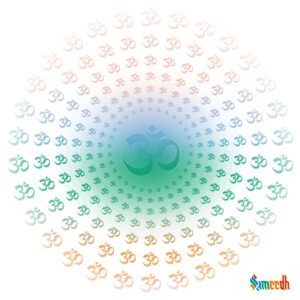The Samhitas are the most ancient and fundamental texts of the Vedas, which are the oldest sacred scriptures of Hinduism. The term “Samhita” is derived from the Sanskrit root “sam,” meaning “together,” and “hit,” meaning “put.” The Samhitas are collections of hymns, chants, prayers, and mantras that form the core of Vedic literature.

There are four Vedas, each with its own set of Samhitas:
- Rigved Samhita: The Rigved is the oldest of the Vedas and is composed of hymns dedicated to various deities. It consists of ten books, known as “Mandalas,” with each Mandala containing hymns addressed to specific gods, natural forces, and cosmic principles. The Rigved is highly revered for its poetic and philosophical expressions.
- Samaved Samhita: The Samaved is characterized by the musical arrangement of the hymns from the Rigved for chanting during Vedic rituals, particularly in the Soma sacrifice. The Samaved Samhita is organized into two parts: the “Purvarchika” (first section) and the “Uttararchika” (second section). The melodies (saman) are an integral part of this Veda.
- Yajurved Samhitas:
- Shukla Yajurved Samhita: This includes the Vajasaneyi Samhita, which is associated with the Sage Yajnavalkya. It is the prose portion of the Yajurved and is primarily used in various rituals and ceremonies.
- Krishna Yajurved Samhita: This includes the Taittiriya Samhita and the Maitrayani Samhita. The Taittiriya Samhita is associated with the Taittiriya school and is used in rituals, while the Maitrayani Samhita is associated with the Maitrayani school.
- Atharvaved Samhita: The Atharvaved consists of hymns, incantations, and charms, and it deals with a wide range of subjects, including healing, magic, and everyday concerns. It is considered the youngest of the Vedas. The Atharvaved Samhita is organized into twenty books.
The primary purpose of the Samhitas is to provide the hymns and rituals used in the Vedic sacrifices and ceremonies. The hymns express reverence for various deities, seek blessings for prosperity and well-being, and contemplate the nature of the cosmos.
In addition to the Samhitas, each Veda has associated texts known as Brahmanas, Aranyakas, and Upanishads, each serving specific roles in the Vedic literature and its evolving philosophical and ritualistic traditions.